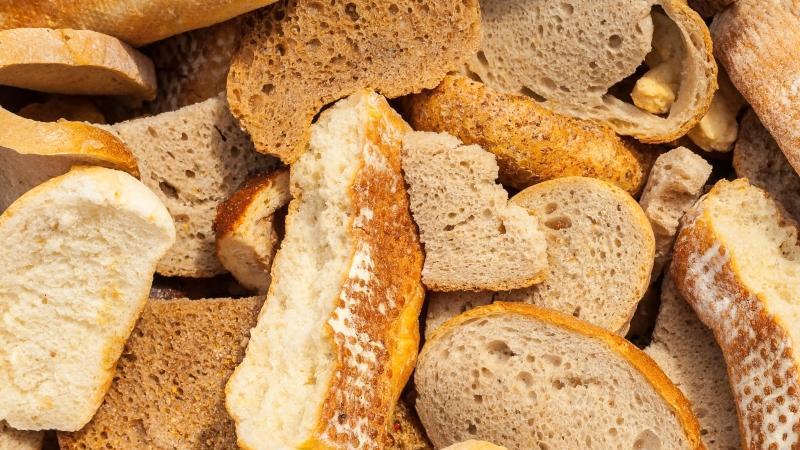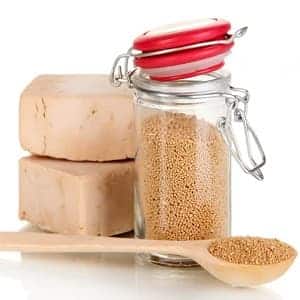The best recipes for bread fertilizers for tomatoes and how to use them correctly to increase productivity
On gardening forums, gardeners often share various tricks for caring for their beds. Many people say that they increase the yield of their tomatoes by feeding them with grain.
Let's figure out what bread recipes there are fertilizer for tomatoes, and how to use them correctly.
About the benefits of grain feeding
Grain feeding is considered one of the most affordable ways to saturate plants with vitamins, nutrients and microelements. From the point of view of nutritional value and benefits, it is in no way inferior to synthetic fertilizers. Such fertilizing can be carried out at any stage of plant development. Suitable for both adult plants and growing seedlings.
The bread in the fertilizing acts as a starter (ferments the nutrient solution). And the yeast in its composition serves as a kind of stimulator of plant growth and development. Both fresh and dry bread are suitable for fertilizer. It's better if it's rye.

What are the benefits of grain feeding:
- increases soil fertility;
- activates the growth and development of plants;
- promotes plant resistance to unfavorable conditions;
- helps the development of the root system;
- accelerates the process of fruit ripening.
Grain fertilizers are not suitable for all plants. They love tomatoes, cucumbers, peppers, strawberries and carrots. But it is not suitable for onions, garlic and potatoes. Plants begin to grow tops to the detriment of fruits.
You can also feed seedlings
Tomato seedlings can also be fed with bread when three weeks have passed after germination. The solution is prepared according to general recipes. No reduction in concentration is required.
Professional advice and proven recipes
You can't buy natural bread fertilizer in the store. You can only cook it yourself. With proper use, you can increase the yield of tomatoes by 20-25%. This works both in the greenhouse and in open ground — it is only important to follow the recipes and application schemes.
How to make your own top dressing from bread? Let's get acquainted with the advice of experienced tomato growers.
Infusion of iodine and black bread
To prepare a bread-iodine infusion for tomatoes, 1 loaf of sliced black bread (or the corresponding amount of bread crusts) is soaked in 10 liters of warm water for 6-8 hours. Then 10 ml of iodine solution is added to the mixture. Mix well and filter.
How to use: water at the roots of plants or do foliar feeding. Experienced tomato growers prefer to spray.
It is advisable to make a series of fertilizing: spray the tomatoes with bread-iodine infusion three times with an interval of 10 days.
Carefully! During the fermentation process, the infusion will smell unpleasant, so it is better to choose a place on the site away from the entrance to the house.
Bread infusion with herbs and jam
The infusion is made into a 10 liter bucket. There are three main components:
- Crusts of black bread (200-300 g).
- Chopped grass. Any garden grass will do, including weeds. It’s good if there are nettles on the site - the infusion with it will be even more useful. Compact the grass into the bucket approximately to the middle.
- Jam (0.5 l). Any old jam will do.
Attention! The sugar contained in the jam will improve the fermentation process of the infusion.
After mixing all the ingredients, the bucket with grass, jam and crusts is filled with water to the top and left to ferment for 7 days.
Professionals recommend using bread-herb solution for root feeding of tomatoes. For feeding, mix 1 liter of infusion with 9 liters of water. Application scheme: liter of solution per bush. It is advisable to fertilize three times. Frequency: once every 10 days.
Important! Root feeding is always carried out after watering the tomatoes clean water. This way their efficiency will be much higher.
Other recipes
Some tomato growers fertilize tomatoes using recipes that contain both bread and yeast.
Very good reviews about bread and yeast infusion. To prepare it take:
- 100 g crackers;
- 100 g fresh baker's yeast;
- 5 liters of water;
- 50-60 g sugar;
- 1 cup wood ash.
All components are fermented for 5-7 days (until bubbles stop forming). 1 liter of the resulting solution is diluted with 10 liters of water and watered at the roots of the tomatoes at the rate of 1 liter per bush.
Another proven recipe: bread infusion with mullein and hay. Hay (1/3 of the volume) is compacted into a 10-liter bucket, 2 kg of mullein and 1 kg of bread crusts are added. Pour in warm water and leave for 10-14 days, then filter.
Application scheme: take 1 liter of infusion, dilute it in 9 liters of water and pour 0.5-1 liter of tomatoes at the root per bush.
It is advisable to fertilize three times with a break of up to 10-14 days.
Read also:
The Budenovka tomato produces a bountiful harvest of delicious tomatoes.
How to deal with blossom end rot of tomatoes in a greenhouse.
Reviews
In open sources - for example, on various thematic forums on the Internet - you can always read reviews from summer residents and gardeners who have already used such fertilizer.
Larisa Rybina, Samara: “When I fed my tomatoes with bread for the first time, the question arose of where to put the soggy bread crusts left over from straining. A neighbor suggested adding them to the compost pile. I still do this, I haven’t found any other use.”
Darina, Tver: “For tomatoes, I add a little ash to the bread and herbal infusion. I water it at the root. They thank you with good harvests. Those bushes that I fertilized were pleased with larger fruits.”
Vasily Petrovich, Moscow region: “Last year I fed tomatoes with bread and yeast tincture five times during the season. The tomatoes started to get fat. I came to the conclusion that there is no need to overdo it. Everything needs moderation."
Let's sum it up
Both dried and fresh products are suitable for bread feeding. Nutrient solutions are prepared on its basis. There are many recipes for making top dressing from bread. Most often, ash, iodine, hay and grass are used as additional ingredients.
Practice shows: bread infusion is especially effective for tomatoes if you add it three times. Better results can be achieved if you use it during periods when tomatoes are starting to set on the bushes and begin to ripen. The break between feedings is about two weeks. By following these simple rules, you will increase your tomato yield!